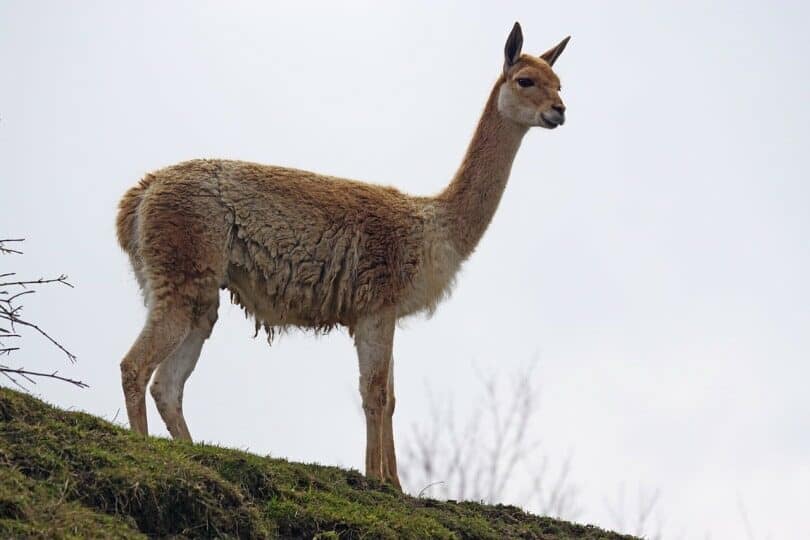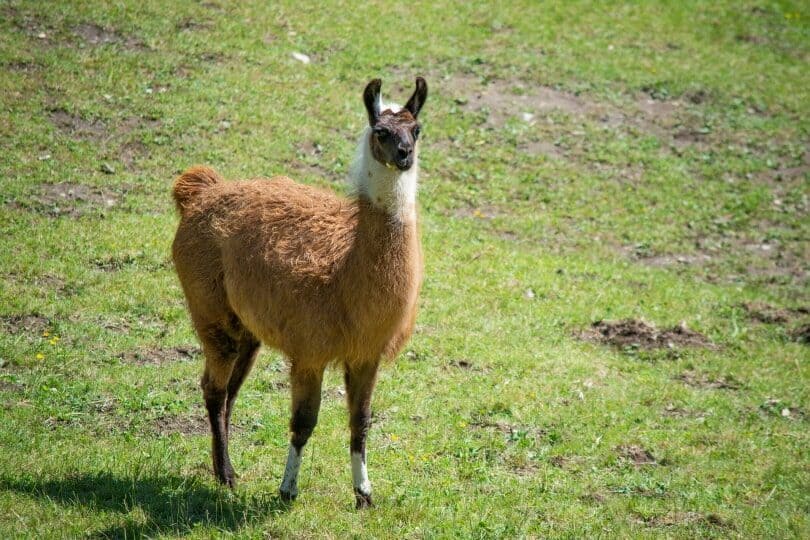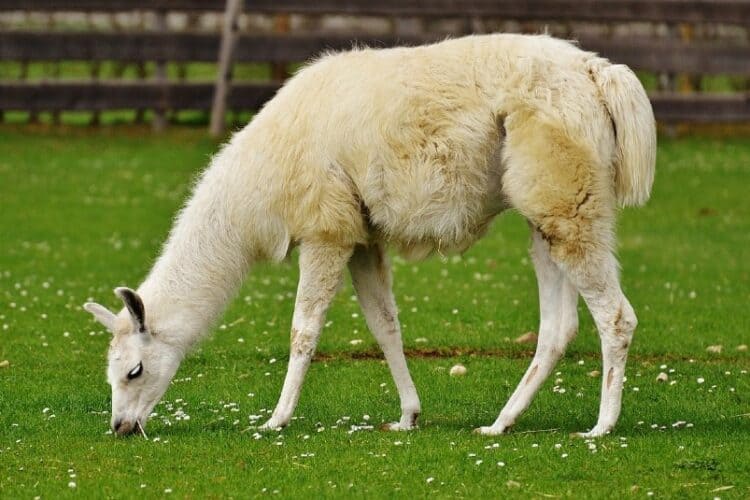Llamas are famous for their shaggy coats and are notorious for spitting when angry. They are domesticated animals that have been used as pack animals by people in the Andes for hundreds of years.
Llamas have proven to be quite valuable in several ways. Other than their usefulness as pack animals, they can act as guardians for herds of sheep. You can also use their fur for wool, and they make wonderful pets.
If you’re just curious or are thinking of adding a llama to your farm and wonder how big they actually get, we’ll discuss what you need to know about the growth of the average llama in this article.
Facts About the Llama
Contrary to what most people believe about llamas, they aren’t always bad-tempered animals that spit at you every chance they get. In fact, they can be very good-natured and loyal companions. They usually only spit when they feel threatened or are defending their food.
Llamas are very social and intelligent animals that are easy to train. They belong to the camelid family; these animals tend to stick out their tongues and spit when agitated. This family includes alpacas, camels, guanacos, and vicunas.
They are very healthy and clean animals that are pretty low maintenance, but you should have at least two llamas since they are herd animals and need to socialize.
Llamas communicate by humming, which can range in tone depending on their current state. Similar to when a cat purrs, llamas will hum when upset, worried, tired, curious, or content. They are gentle and curious animals that can be quite friendly and approach people quite comfortably.

Llama Size and Growth Chart
Every llama will be a little different in size and weight as it all depends on a few factors. The sex of the llama, plus the diet and genetics, will all give you llamas of different sizes.
The numbers we’ve given you in our chart below are just meant as a guide and only represent an average llama. You’ll need to do some calculations based on the starting weight of your own llama.
A cria (which is Spanish for baby) is a baby llama that can weigh 15 to 30 pounds at birth. Crias should be weighed every day, and they gain about ½ to 1 pound every day for the first two weeks. The average cria should be double their birth weight by 1 month of age. They are usually weaned by the time they are 6 months old.
The cria’s weight gain within the first few months of life averages about 10 ounces every day and slows down gradually over time.
Adult male llamas average 300 to 400 pounds in weight and females 230 to 350 pounds. The average llama can range from 5.5 to 6 feet in height to the top of their heads (which doesn’t include their ears).
The following chart is based on the standard weight range of an average male llama.
| Age | Weight Range |
| Birth | 26 lbs. |
| 1 month | 52 lbs. |
| 2 months | 88 lbs. |
| 4 months | 120 lbs. |
| 6 months | 135 lbs. |
| 2 years | 310 lbs. |
When Does a Llama Stop Growing?
Typically, llamas reach their full size and are considered mature adults by age 3. If llamas receive the necessary nutritional requirements, female llamas tend to be fully grown by age 2, whereas males mature by 3 years. Llamas are known to live an average of 15 to 25 years.

Factors Affecting the Size of Llamas
There are generally two main factors that will impact the growth of the llama. The primary influence on their size is genetics and, of course, the sex since female llamas tend to be smaller than males. But even more importantly, the llama’s diet will affect the quality of its growth.
A nutritionally balanced diet designed specifically for llamas will ensure the appropriate weight and height ratio. The right balance of carbohydrates and protein should give you a healthy llama at the right height and weight.
Ideal Diet for Maintaining a Healthy Weight
Llamas are herbivores and primarily eat hay, grass, and other grains. They have three stomachs and therefore eat like cows, where they regurgitate their food and chew their cud.
They also eat treats in the form of fresh fruit and vegetables like sweet potatoes, broccoli, apples, and carrots. Cut everything into small pieces so they do not choke when eating.
It’s imperative that llamas can forage. Not only for their essential nutritional requirements, but it also helps them psychologically because they can become frustrated and bored without this behavior. They are also browsers and grazers and require about 10% protein in their diets.
Finally, your llama should always have access to clean and fresh water – they’ll consume around 2 to 3 gallons of water daily.

How to Measure Your Llama
You can look at this video for a good visual of how to measure your llama. They also show a great way to make your own scale so you can weigh your llama as well as their own homemade measuring device.
Start by ensuring your llama is on a level surface. You’ll need either a measuring device used for horses, or you can try to make your own as outlined in the video.
Place the stick on the ground, measure up to the llama’s shoulders (or withers), and note the measurement. Then measure at the llama’s hips and write that down as well.
You’ll then want to use a tape measure from the top of the stick/measuring device and measure up to the top of the llama’s head (not including the ears).
And finally, you’ll want to measure the llama’s legs. You subtract the leg measurement from the wither’s measurement, which gives you the girth depth.
Conclusion
Llamas are quite sturdy animals from a region that takes a certain hardiness to survive and thrive. Just like their cousins, the camel, they can subsist on very little water and can eat quite a variety of plants.
As long as your llama is growing at the proper rate, you’ll probably have a healthy animal that will be a joy to take care of. And this can happen with the right diet and care from you.
Featured Image Credit: Alexas_Fotos, Pixabay
















